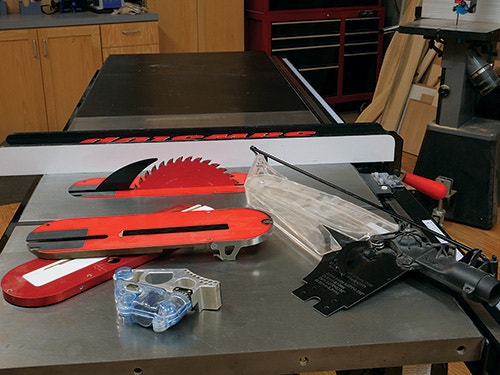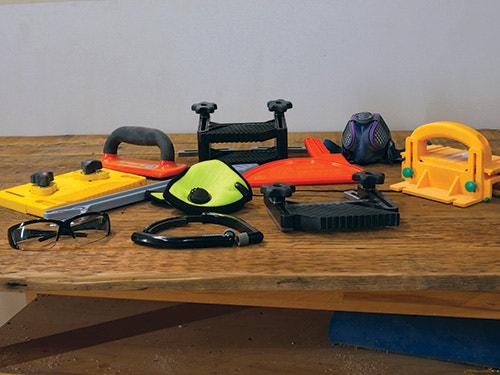Improving Table Saw Safety
There is a wide variety of safety gear on the market that applies to table saw use. Push sticks of various types and styles protect fingers. Featherboards secure and guide stock. Personal protective equipment shields hearing, eyesight and lungs. But to be effective, these items need to be routinely used.
Every year there are thousands of accidents, minor to major, that happen on homeshop table saws. And truth be told, almost all of them are due to "operator error." They fall primarily into two categories: laceration (including amputation) and kickback. Both are eminently preventable by practicing proper table saw techniques.
The easiest way to prevent injury is to make use of your safety equipment. That seems obvious, but when asked in a survey, "How often do you use a blade guard on your table saw?" 23 percent of woodworkers said they had permanently removed their guard, 29 percent said they "almost never" use it and 12 percent said only sometimes. So that totals 64 percent of woodworkers who are failing to take advantage of the blade guard's safety features. and annoying. (And some of those guards were so primitive as to be of questionable use.) But with newer saws, the guards are both effective and easy to install or remove. While blade guards won't protect your fingers 100 percent if you are truly careless, they do provide a solid barrier between you and the spinning saw blade.
Speaking of keeping your fingers safe, be certain to make use of push sticks to keep your fingers a safe distance from the blade and featherboards to hold the stock firmly against the fence. All of this falls into the realm of simple common sense. (But speaking for myself, I have foolishly pushed the envelope on push stick safety from time to time.)
New saws also have a true riving knife rather than a traditional splitter. Riving knives curve around the back of the saw blade and raise and lower with it. They prevent saw kerfs from closing up and pinching the back of the blade when stock distorts, which can cause a kickback. They're a great safety feature. When combined with anti-kickback pawls, they can make kickback nearly impossible. Keep them on your saw and properly adjusted.
SawStop Innovation

I was at an Atlanta trade show many years ago where SawStop's "hot dog saw" blade brake technology was first introduced. It was amazing to see, but at the time my concern was how it would age. After years in a dusty, grimy shop environment, would the system start to become erratic? Well, that is a Rubicon that we have passed. The saw brake technology has proved to be durable over time and has prevented thousands of injuries. So I am more than comfortable endorsing the technology.
But SawStop table saws are not one-trick ponies when it comes to safety. Their riving knives and blade guards are top quality. And their rip fences are first-rate. (Rip fences that are easy to adjust and remain parallel to the saw blade make table saws safer.)
Keep the inspiration coming!
Subscribe to our newsletter for more woodworking tips and tricks




